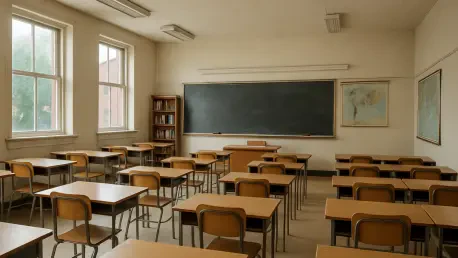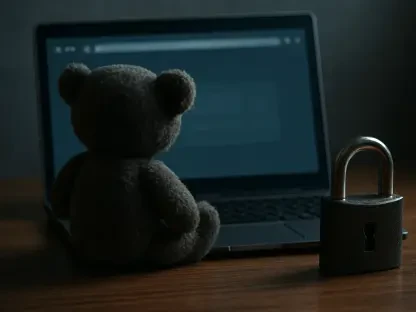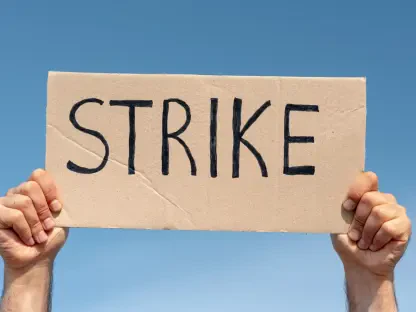As the election draws near, St. Paul Public Schools (SPPS) stand at a critical crossroads, with the future of over 33,000 students hanging in the balance due to a pivotal levy referendum. School leaders, including Hallah Henderson, chair of the St. Paul school board, and Leah VanDassor, president of the St. Paul Federation of Educators, have issued a heartfelt plea for voter support. They warn that failure to pass this measure could trigger devastating cuts, unraveling the fabric of public education in the district. Far from seeking funds for new initiatives or luxuries, this referendum is framed as a last-ditch effort to preserve the essentials—teachers in classrooms, manageable class sizes, and vital programs that shape young minds. The message resonates with urgency: a “yes” vote is not just a financial decision but a commitment to safeguarding the educational foundation of the community. This moment calls for collective action to protect what matters most for St. Paul’s children and their prospects ahead.
Financial Strain Threatens Core Education Programs
The financial challenges facing SPPS are stark and immediate, with a staggering $37.2 million in potential cuts projected for the 2026-27 school year if the levy does not pass. Such a shortfall would strike at the heart of classroom experiences, eliminating cherished programs like art, music, and sports, which are often the first to be sacrificed in budget crises. Beyond extracurriculars, college and career-readiness initiatives would face the axe, leaving students less prepared for life after graduation. The prospect of larger class sizes looms large, reducing the personalized attention that many children need to thrive. School leaders underscore that this levy represents not a desire for expansion but a desperate attempt to hold the line, ensuring that basic educational standards are maintained for every student in the district. Without this funding, the quality of education in St. Paul risks a significant decline, impacting an entire generation.
Equally concerning is the potential reduction in essential support services that cater to students’ diverse needs within SPPS. These services, ranging from counseling to academic interventions, are lifelines for many, particularly those facing personal or learning challenges. Cuts of this magnitude would also likely force the district to lay off dedicated educators and staff, further straining an already stretched system. The ripple effects would extend beyond individual classrooms, eroding the sense of community and stability that schools provide. Leaders argue that approving the levy is crucial to prevent these dire outcomes, maintaining a level of staffing and resources that allows for meaningful student engagement. The numbers paint a grim picture, but they also highlight the tangible difference that voter support could make in preserving the educational environment that St. Paul families rely on day after day.
Broader Funding Issues Compound Local Woes
The crisis in SPPS is not an isolated problem but a symptom of systemic failures in education funding at both state and federal levels across Minnesota. State allocations have failed to keep pace with inflation since significant policy changes over two decades ago under Governor Tim Pawlenty, resulting in a shortfall estimated at $50 million for SPPS this year alone. This chronic underfunding means that districts are perpetually playing catch-up, unable to meet rising costs without local intervention. The authors of this urgent plea highlight how such gaps force communities to turn to referendums as temporary fixes, a practice that places an unfair burden on local taxpayers. Until larger reforms are enacted, these stopgap measures remain the only way to protect students from the consequences of inadequate state support.
On the federal front, the situation is no less troubling, with a reported $732.4 million shortfall in special education funding for Minnesota schools in recent data from 2023. Proposed budget cuts at the national level threaten to deepen this deficit, disproportionately affecting the most vulnerable students who rely on specialized services. This combination of state and federal neglect creates a perfect storm for districts like SPPS, where leaders must scramble to fill gaps that should be addressed at higher levels of government. The frustration is palpable among educators and administrators who see their efforts undermined by policies beyond their control. The levy, while not a perfect solution, stands as the immediate barrier between St. Paul’s students and a cascade of educational setbacks driven by these broader funding failures.
Unity and Collaboration Within the District
Amidst the financial gloom, a silver lining emerges in the form of strengthened collaboration within SPPS, showcasing a model of resilience. For the first time in nearly 25 years, the district, school board, and the St. Paul Federation of Educators reached a contract agreement before the start of the school year without the need for mediation. This milestone reflects a shared dedication to putting students and families first, even when resources are scarce. Such unity fosters trust and transparency, creating a foundation for tackling challenges together. However, leaders caution that while this partnership is a significant achievement, it cannot fully compensate for the looming budget deficits. Voter approval of the levy remains essential to translate this collaborative spirit into tangible benefits for the classroom.
This newfound harmony within SPPS also serves as a reminder of what can be accomplished when stakeholders align around a common goal. The agreement prioritizes stability for educators, which in turn supports consistent learning environments for students. Yet, the reality of financial constraints casts a shadow over these gains, as even the best intentions cannot conjure up funds that simply do not exist. The levy represents the critical next step to ensure that this progress is not undone by cuts that would strain every aspect of school operations. Community members are urged to see this referendum as a way to bolster the district’s united front, reinforcing the idea that supporting schools is a collective responsibility. Without this backing, the hard-won advancements in district relationships risk being overshadowed by unavoidable reductions.
Balancing Pandemic Recovery and Economic Pressures
The shadow of the COVID-19 pandemic continues to loom over SPPS, complicating an already dire financial picture with lingering academic and emotional impacts. It has taken three full years for students to near pre-pandemic academic benchmarks, a slow recovery that speaks to the depth of disruption caused by those unprecedented times. Federal relief funds, once a lifeline for programs like after-school support and reading assistance, have now dried up, leaving a void at a critical juncture. School leaders warn that further cuts would reverse these fragile gains, stripping away the very resources—dedicated teachers, arts specialists, and targeted interventions—that have helped students rebuild. The levy is positioned as a safeguard against such setbacks, ensuring that recovery efforts are not derailed just as progress becomes visible.
At the same time, the economic strain on St. Paul residents cannot be ignored, as rising city and county taxes add pressure to household budgets. School officials express genuine empathy for taxpayers grappling with these challenges, recognizing that the request for additional funds comes at a difficult moment. Nevertheless, they argue that the levy remains the only viable tool to avert catastrophic cuts to education in the short term. A commitment to advocate for sustainable state funding solutions post-election is part of their pledge, aiming to reduce reliance on local referendums in the future. This dual focus—addressing immediate needs while pushing for systemic change—seeks to balance the burden on the community with the urgent requirements of students. The hope is that voters will see this measure as a necessary step to protect schools now, even as broader reforms are pursued.
Moving Forward with Community Support
Reflecting on the challenges faced, it became evident that the St. Paul community stood together in a defining moment when the levy referendum was put to the vote. The dire warnings of $37.2 million in cuts had painted a stark reality, one where classrooms bore the brunt of slashed programs and diminished support. Collaborative efforts within SPPS had set a strong precedent, showing what unity could achieve even under strain. Yet, the resolution of that immediate crisis hinged on the ballots cast, with each vote echoing a choice about the value placed on public education. The response from residents shaped the trajectory for thousands of students, determining whether their learning environments remained intact.
Looking ahead, the focus shifted to actionable steps beyond that pivotal election. Advocacy for robust state and federal funding emerged as a priority, aiming to lessen the recurring dependence on local measures. SPPS leaders vowed to press for policies that would address the root causes of underfunding, ensuring districts across Minnesota could operate without constant financial brinkmanship. Community engagement was seen as vital, encouraging ongoing dialogue about how best to support schools sustainably. The path forward demanded a shared resolve to prioritize education as a public good, building on the momentum of that critical vote to forge lasting solutions for future generations.









